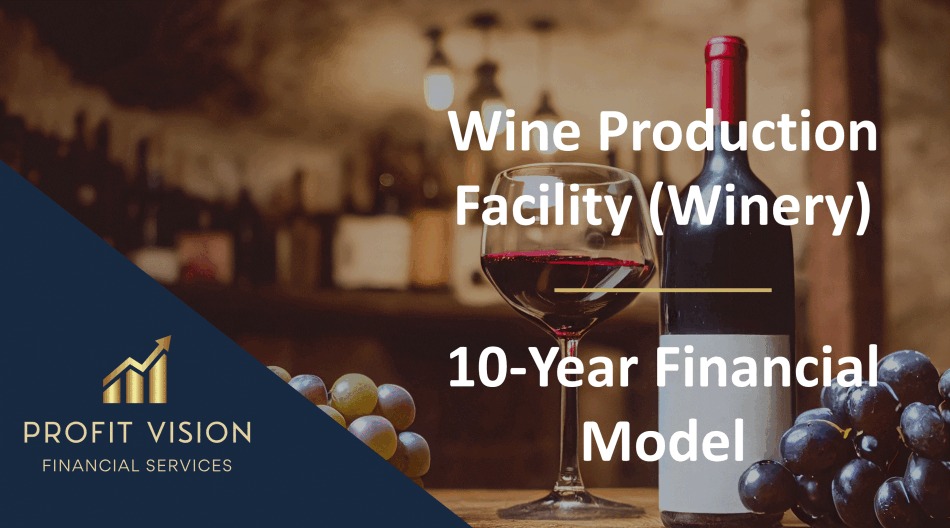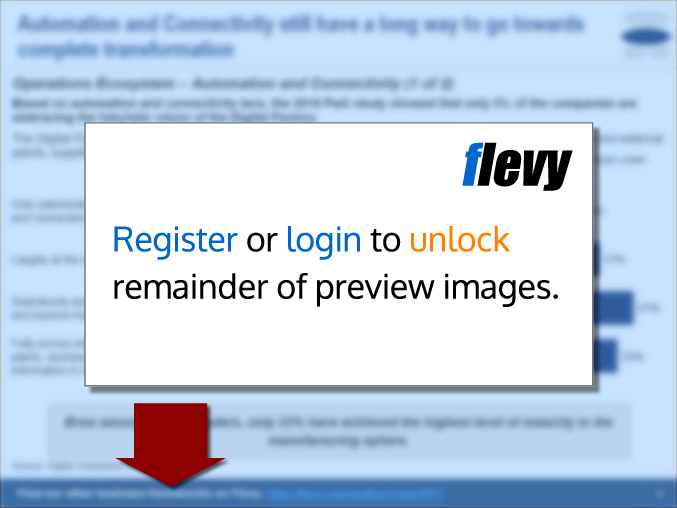Wine Production Facility (Winery) – 10 Year Financial Model (Excel XLSX)
Excel (XLSX)
BENEFITS OF THIS EXCEL DOCUMENT
- Presents a development and operations scenario of a Wine Production Facility (Winery) purchasing grapes from growers and producing a variety of wines.
AGRICULTURE INDUSTRY EXCEL DESCRIPTION
A winery is a facility where wine is produced, from crushing and fermenting grapes to aging, bottling, and sometimes selling the finished product. It may source grapes from its own vineyard or purchase them from growers. Wineries vary in size from small, family-run operations to large commercial producers and often offer tastings, tours, and events to attract visitors. The focus is on craftsmanship, quality, and maintaining distinctive flavors that reflect the grape varieties and growing region.
This Financial Model presents a development and operations scenario of a Wine Production Facility (Winery) purchasing grapes from growers and producing a variety of wines. The model helps assess profitability, calculate return on investment (ROI), and guide decisions on product mix, production scaling, and market expansion without the capital and operational costs of managing a vineyard.
The model includes calculations and assumptions for the Winery Investment Method and Related Costs (Development ,Acquistion or Lease), Production Assumptions (6 different wine types, Grpaes Purchases, Net Yield per ton, Barrel and Bottling Aging periods per wine type), Packaging (Bottle size, Case size), Revenue Channels (Domestic Wholesale, Domestic Retail, Exports, Tasting Room & Tours, Events & Venue Rentals, Merchandise), COGS Assumptions (Raw Materials, Processing Costs, Utilities, Logistics, etc.), Payroll, Operating Expenses, Fixed Assets & Depreciation, Financing through Debt & Equity, and Exit Valuation assumptions in case of a potential sale of the business.
The structure of the template follows Financial Modeling Best Practices principles and is fully customizable.
Detailed instructions for the functionality of the model are included in the Excel file.
Model Inputs and Setup Reports:
• General Setup Assumptions, incl. Starting Expenses (in case the business is a startup), Production Metrics, Products Mix, Revenue Channels, COGS and Financing (Debt & Equity)
• Payroll, OpEx, Inventory Control and Annual Capex incl. Depreciation Schedule
• Monthly Budget Allocation
• Forecast Scenarios
Output Reports:
• Monthly Operating Cash Flow Report
• Annual Financial Statements (3 Statement model)
• Inventory Management
• Break-Even & Profitability Analysis
• KPIs & Financial Ratios, including several Profitability, Efficiency, Liquidity, and Leverage (Solvency) Ratios
• Performance Dashboard
• Business Valuation, including DCF Model, Return Metrics (NPV, EV, IRR, MOIC, ROI, etc.), and Sensitivity Analysis
• Investors Returns Waterfall Model
• Dynamic Professional Executive Summary with an option to choose the Exit Year and Exit Scenario (with or without Terminal Value)
Help & Support
Committed to high quality and customer satisfaction, all our templates follow best-practice financial modeling principles and are thoughtfully and carefully designed, keeping the user's needs and comfort in mind.
Whether you have no experience or are well-versed in finance, accounting, and the use of Microsoft Excel, our professional financial models are the right tools to boost your business operations!
If you experience any difficulty while using this template and cannot find the appropriate guidance in the provided instructions, please feel free to contact us for assistance.
If you need a template customized for your business requirements, please e-mail us and provide a brief explanation of your specific needs.
Got a question about the product? Email us at support@flevy.com or ask the author directly by using the "Ask the Author a Question" form. If you cannot view the preview above this document description, go here to view the large preview instead.
Source: Best Practices in Agriculture Industry, Integrated Financial Model Excel: Wine Production Facility (Winery) – 10 Year Financial Model Excel (XLSX) Spreadsheet, Profit Vision









